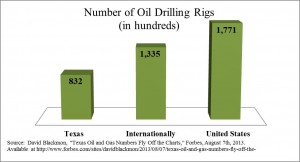Oklahoma Follows Texas to Prohibit Hydraulic Fracturing Bans
On Friday, May 30, 2015, Oklahoma became the second state to officially ban local bans on hydraulic fracturing. The bill prohibits bans on hydraulic fracturing, as well as other oil and gas drilling operations. The three-person Oklahoma Corporation Commission will now continue to act as the main regulator of oil and gas operations in the state.
Corporate Commissioners are elected by the people of Oklahoma to regulate the oil and gas industry. They are best equipped to make decisions about drilling and its effect on seismic activity, the environment and other sensitive issues.
The bill was written in response to proposals to increase oil and gas drilling regulations in major cities and as an increasing number of Oklahomans become disgruntled with the mounting number of earthquakes. Sponsored by leaders in the Oklahoma House and Senate, the bill passed the House by a vote of 64-32 and the Senate by 33-13. Amendments to the original bill will still allow cities and municipalities to place “reasonable” restrictions on oil and gas operations, such as setbacks, noise, traffic and fencing regulations.
The bill comes at a time of great controversy within Oklahoma as the Oklahoma Geological Survey recently said increases in earthquakes were “very unlikely to represent a naturally occurring process.” In February, the U.S. Geological Survey published a paper written by Oklahoma Seismologic Austin Holland stating that the increase in seismic activity in Oklahoma was from human-induced activities.
Kim Hatfield, chairman of the regulatory committee at the Oklahoma Independent Petroleum Association (OIPA) responded:
This is something the Oklahoma Geological Survey, Oklahoma Corporation Commissions and OIPA have been working on for well over a year. We knew this was a possibility.
Oklahoma’s oil and natural gas producers have a proven history of developing the state’s oil and natural gas resources in a safe and effective manner.
